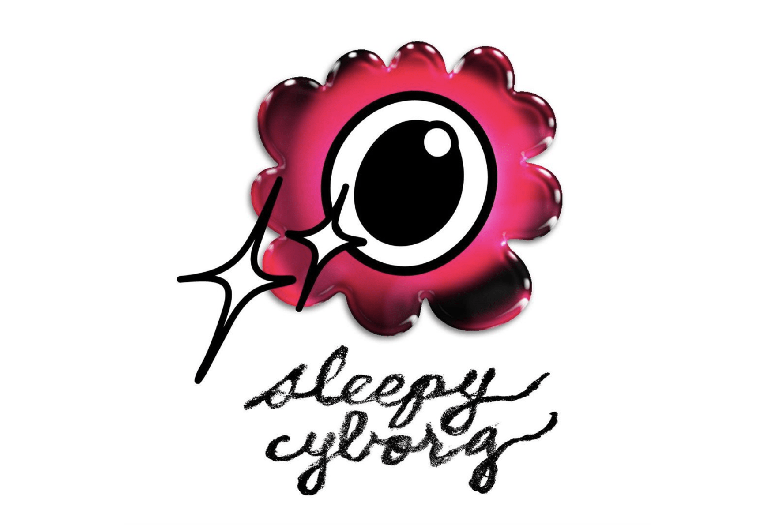The welcome mat is out at Sleepy Cyborg.
If you want to see the new exhibition at the Rice student-run art gallery in person, you can -- alone. One visitor at a time. Face masks are required, just like on the rest of the campus. And you must make a reservation.
However, you can just as easily see the exhibition, “Quaranzine,” online at matchbox.rice.edu, where it opened Sept. 10. The website URL reflects the former name of Rice’s long-standing student art gallery: Matchbox, which itself reflected the diminutive, 160-square-foot dimensions of its space inside Sewall Hall.
Now the gallery has been renamed Sleepy Cyborg. Unlike the physical constraints of the old Matchbox, Sleepy Cyborg’s website can host thousands of visitors at a time.
Incoming gallery director Isabel Samperio, a Hanzsen College senior majoring in visual arts, had the vastly larger potential audience in mind when space was given a new name for the new year. Rechristening the gallery is a nascent tradition for student directors, a rebranding practice begun last year by Suzanne Zeller ‘19, who renamed Matchbox “Inferno” when she took over.
The name Sleepy Cyborg was born partly from the idea that the gallery would be fully present in two realms at once. (It’s also a reference to the seminal feminist posthumanist essay “A Cyborg Manifesto” by Donna Haraway.) This phenomenon is circumstance many students attending online classes now constantly reckon with, Samperio said.
“I was thinking a lot about the hybridity of having to dually inhabit a virtual and a physical space,” she said. “A lot of it was very much related to my experience in the pandemic: going to virtual classes and having to be more plugged in to a virtual reality than ever before, but also still being a person, a human with physical form.”
Virtual exhibitions
Running the student art gallery on campus — and online — was not something Samperio initially imagined doing. She creates mixed-media paintings and works on paper and is also interested in “traditionally overlooked” art forms such as zines, digital art and craft. Her goal, from freshman year, was instead to apply for an exhibition through the gallery.
Last semester, her junior field trip seminar in the Department of Visual and Dramatic Arts (VADA) was scheduled to visit Los Angeles before the pandemic hit. With their various L.A. art outings planned by professor Christopher Sperandio canceled, Samperio said the course quickly pivoted to a wide range of online exhibitions and virtual museum visits.
“(Sperandio) was really creative in what he was showing us, so I got to truly see the potential of virtual exhibiting through that class,” Samperio said. “It was really insightful.”
So when Sperandio mentioned an opportunity to direct the gallery during its return for the 2020-21 year, she said she was both intrigued and excited — she hadn’t envisioned running a gallery, and during a pandemic nonetheless, but she was reminded of how interesting those virtual exhibitions were last semester.
Samperio was also bolstered by the VADA faculty and staff: Sperandio, events and program coordinator Maria Martinez, department administrator Rachel Boyle and John Sparagana, the Grace Christian Vietti Chair in Visual Arts, all of whom she cited as a great source of encouragement.
“It was really inspiring talking to them,” she said. “They were always so supportive of my ideas.”
Alternative art
The first exhibition, “Quaranzine,” is a reflection of Samperio’s interest in “alternative forms of media” such as zines, self-published ‘magazines’ made for circulation among a small group of people. The handmade publications are more personal and intimate creations than traditional magazines and capture a more tightly focused zeitgeist.
The zines in the Sleepy Cyborg exhibition are the products of a tight-knit group of college students based in New York City who were sent back home last spring to states across the country. Missing one another, they began a zine exchange through the mail. Before long, the group existed as a sort of chain letter effect that spread their zines from coast to coast.
“I thought it was a really cool, fun, collaborative project and definitely a reflection of the times now,” Samperio said. “And traditionally, in the art world, something like mail art is very compelling but not always given a platform.”
The second exhibition, scheduled for early October, will highlight Raquelle Jacqueline’s colorful comic work and illustration — another art form not traditionally given exhibition space in galleries.
Samperio hopes to use her position and platform as gallery director to continue spotlighting alternative and experimental art forms as well as underrepresented artists from the Rice community and in Greater Houston, including women, non-binary and LGBTQ artists and artists who are Black, Indigenous and people of color.
“I think it's such a unique opportunity that I'm a student with significant control of an exhibition space — not many universities have that,” Samperio said.
It’s important, she said, to use that platform responsibly, especially in light of current movements for racial justice and the toll the pandemic has taken on artists as they struggle to show their work.
“Now, especially with COVID, a lot of artists that are in those underrepresented and underexposed groups are struggling; it’s a difficult time. In particular, it’s so important that BIPOC and LGBTQ voices in the arts are amplified,” Samperio said. “So trying to use the gallery in any way I can to support these artists I think is more important than ever really.”
For more on Sleepy Cyborg, visit matchbox.rice.edu or instagram.com/sleepycyborggallery.




